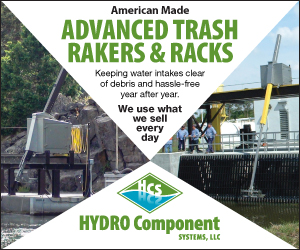
4 minute read
Federal Government Makes Historic Commitments to Stay Litigation in Columbia River Basin
from America's Engineers: The People, Programs, and Projects of the U.S. Army Corps of Engineers '24-'25
BY TOM CONNING
NORTHWESTERN DIVISION Portland District
The U.S. Army Corps of Engineers (USACE) began major modifications to the Columbia River Basin when it completed building Bonneville Lock and Dam on the lower river in 1938. Over the next 37 years, the agency continued building locks and dams on the Columbia and Snake river systems to improve navigation, generate hydropower, manage flood risk, and provide water for irrigation while balancing the needs for fish and wildlife in the Pacific Northwest.
Since 1975, USACE has been balancing competing priorities within the system, including increasing operations to benefit the now-Endangered Species Act-listed salmon stocks. In 2023, the Biden-Harris administration made a historic commitment to prioritize the restoration of healthy and abundant wild salmon, steelhead, and other native fish in the Columbia River Basin while delivering affordable and reliable clean energy, supporting the local agriculture economy, and meeting the many resilience needs of the region. Consistent with President Joe Biden’s direction, the administration is committed to honoring the United States’ obligations to tribal nations and, at the same time, recognizing the critical economic and environmental benefits that the Columbia River provides to communities and businesses.
advertisement

The U.S. government entered into two memorandums of understanding (MOUs) with various parties to stay litigation, both of which happened over winter in 2023-2024. One MOU is with the Confederated Tribes of the Colville Reservation, Spokane Tribe of Indians, and the Coeur d’Alene Tribe to support the implementation of the Upper Columbia United Tribes’ Phase 2 Implementation Plan (P2IP) for testing the feasibility of reintroduction of salmon in the Upper Columbia River Basin over a period of 20 years. This MOU resulted in a 20-year stay in litigation.
The second MOU is with Oregon, Washington, the Nez Perce Tribe, Confederated Tribes and Bands of the Yakama Nation, the Confederated Tribes of the Warm Springs Reservation of Oregon, the Confederated Tribes of the Umatilla Indian Reservation, and the National Wildlife Federation plaintiffs and is intended to pause the Columbia River System (CRS) litigation for up to 10 years. This MOU and the commitments made by the U.S. government are referred to as the Resilient Columbia Basin Agreement.

“We recognize the importance of these agreements, as they will shift the focus away from litigation, the uncertainty that litigation brings, and allow for additional focus on planning and completing projects,” said Beth Coffey, director of programs for USACE’s Northwestern Division. “We will also be able to meaningfully contribute to improvements in conditions for salmon and other native fish in the system with an increased focus on ecosystem restoration, in addition to compliance with the Endangered Species Act,” she said.
advertisement

As part of the MOUs with tribes, states, and other parties, the U.S. government developed a package of actions and commitments that it believes will provide meaningful improvements for native fish in the basin while still providing affordable and reliable clean energy, supporting the local economies of communities that rely on the CRS, and meeting the many resilience needs of the region. It is important to note that USACE’s commitments do not call for breaching dams, nor does USACE have authority to take that action. Breaching the lower Snake River dams would require authorization and appropriations from Congress.
“We will continue engaging with our regional tribes, states, partners, stakeholders and the public as we undertake this important work,” elaborated Coffey. “We recognize we have an important job to do, and we will continue meeting all authorized project purposes at the dams in the Columbia River System as we implement these agreements.” AE
—
Visit www.Americas-Engineers.com to sign up for a free print edition of our annual publication and to join our weekly newsletter.










